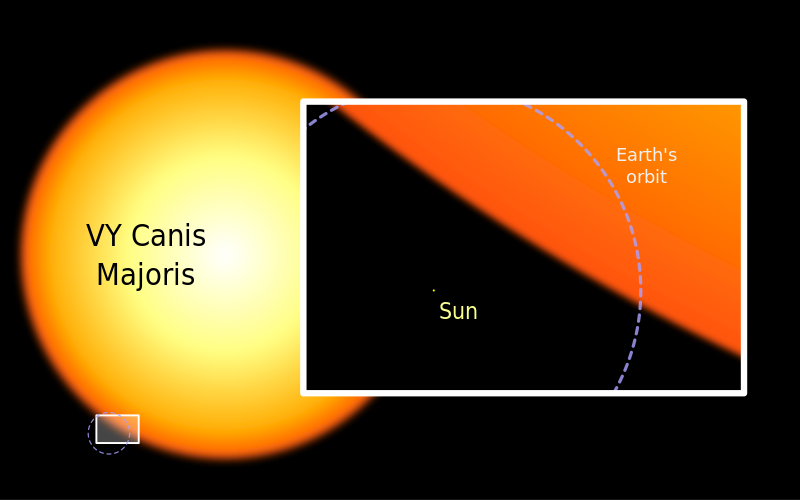10.07.2012, 08:13
(if this topic gets delete, PM me the reason please)
http://en.wikipedia.org/wiki/VY_Canis_Majoris
I'm just amazed by its hipergiganticfreakingbigass size >.<
Who doesn't want to bother clicking the link, heres an image, in comparison with the sun >.>

So, is the sun big? LOL, fuck no. >.>
http://en.wikipedia.org/wiki/VY_Canis_Majoris
I'm just amazed by its hipergiganticfreakingbigass size >.<
Who doesn't want to bother clicking the link, heres an image, in comparison with the sun >.>

So, is the sun big? LOL, fuck no. >.>


